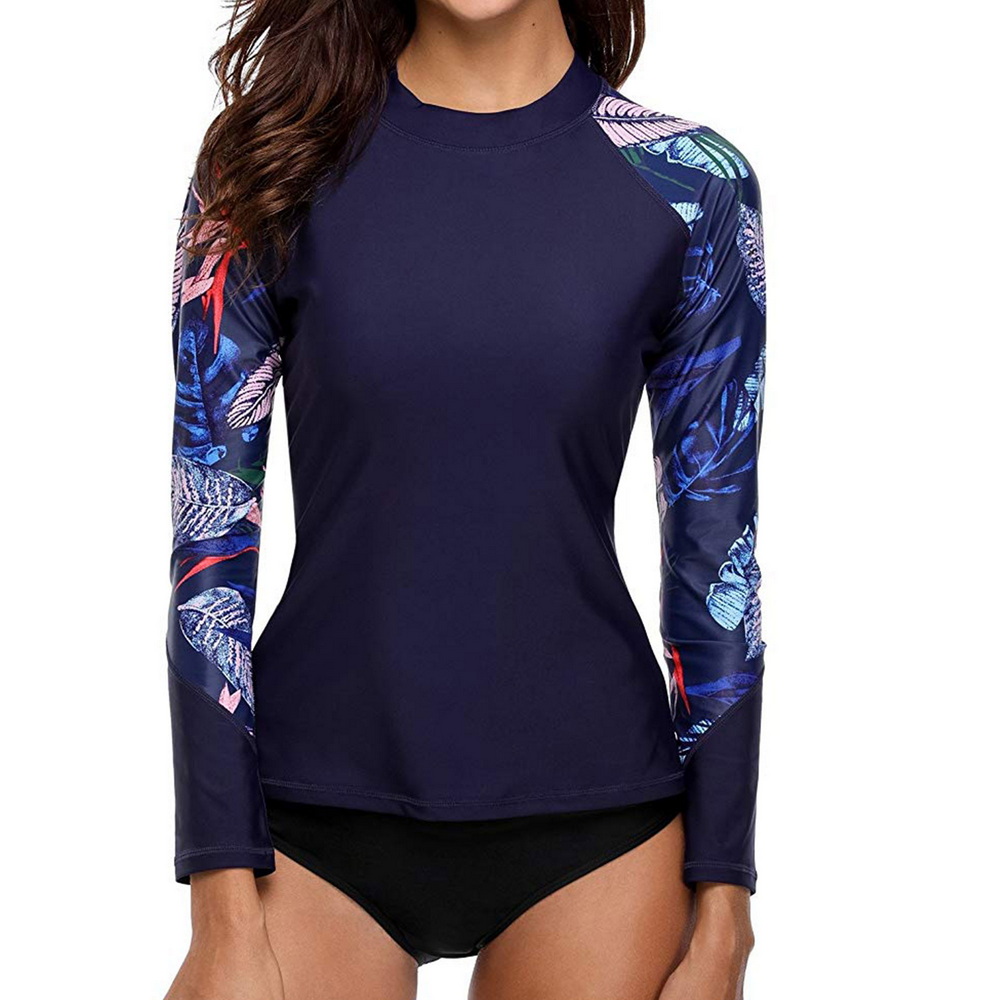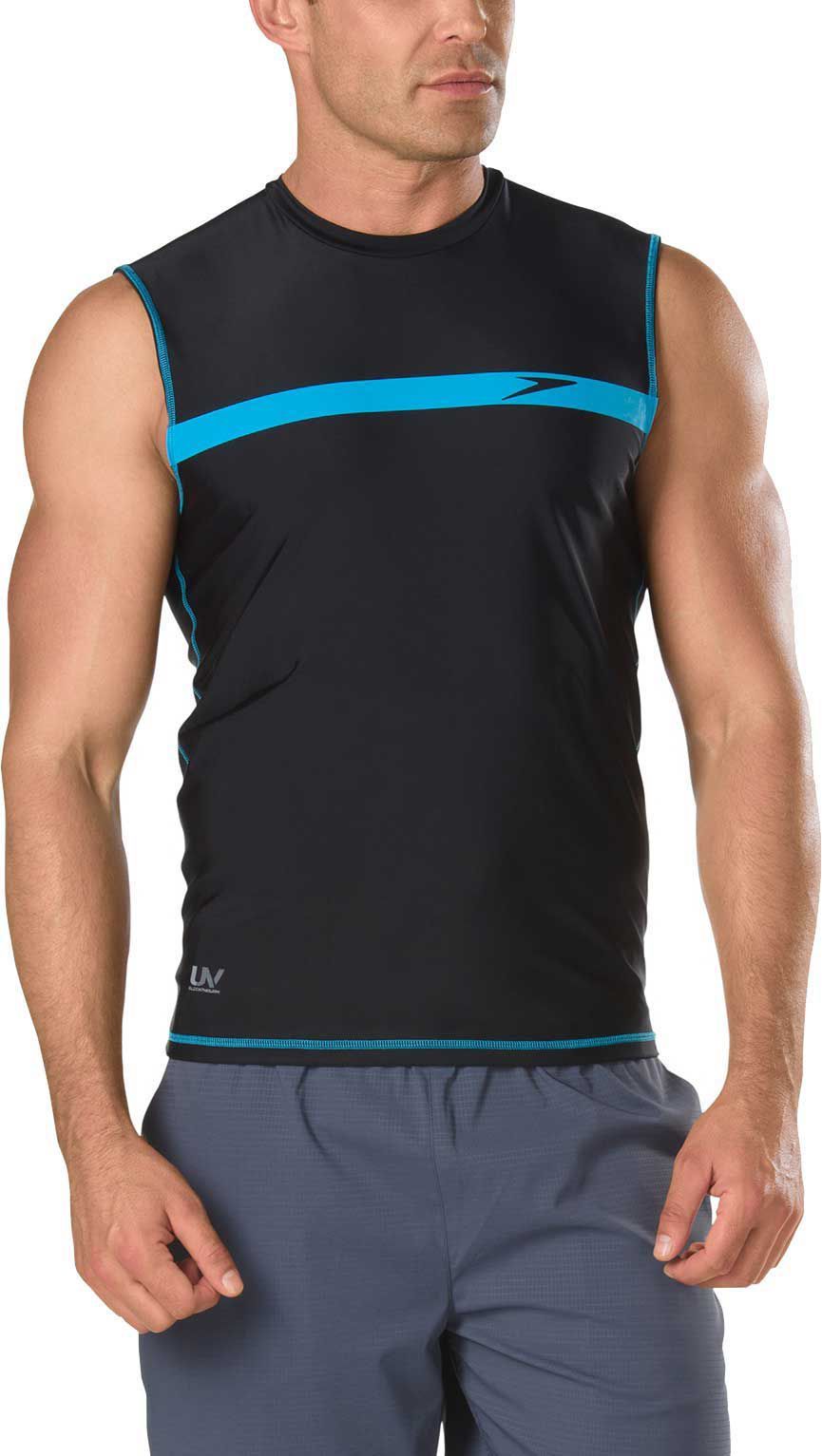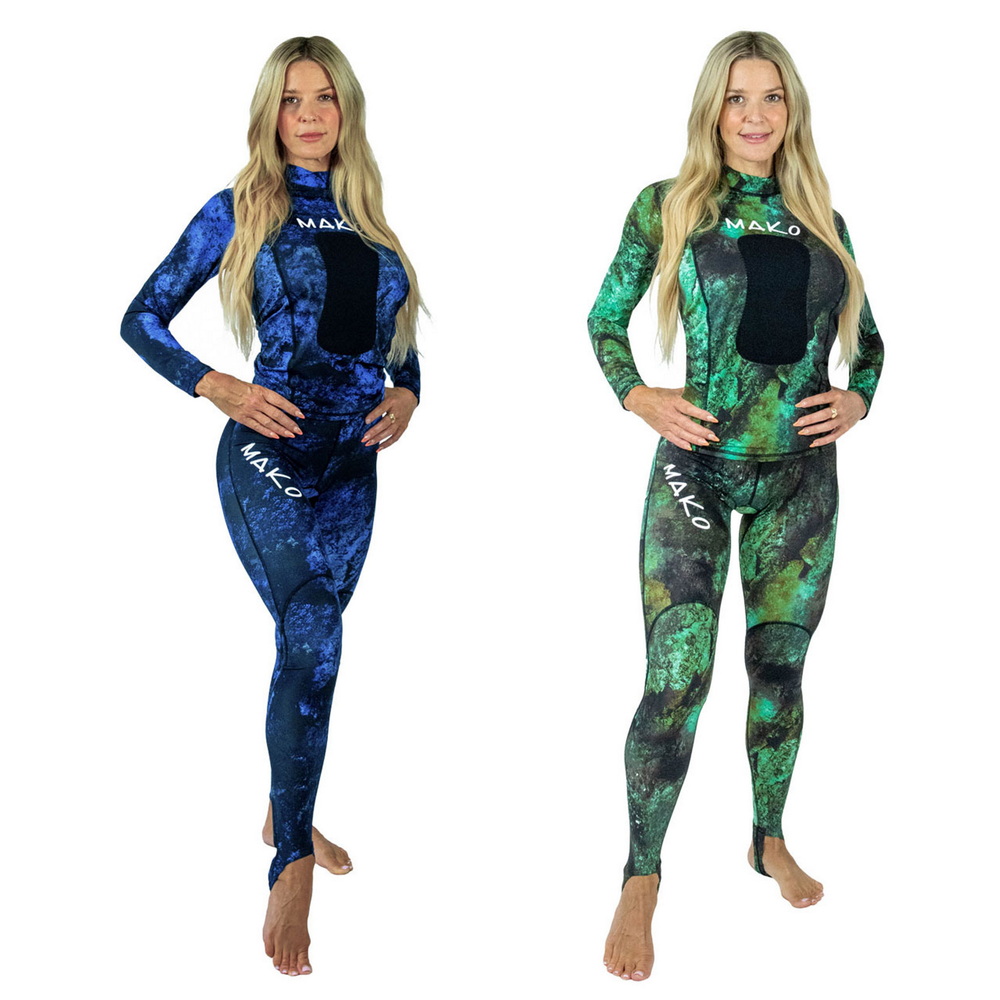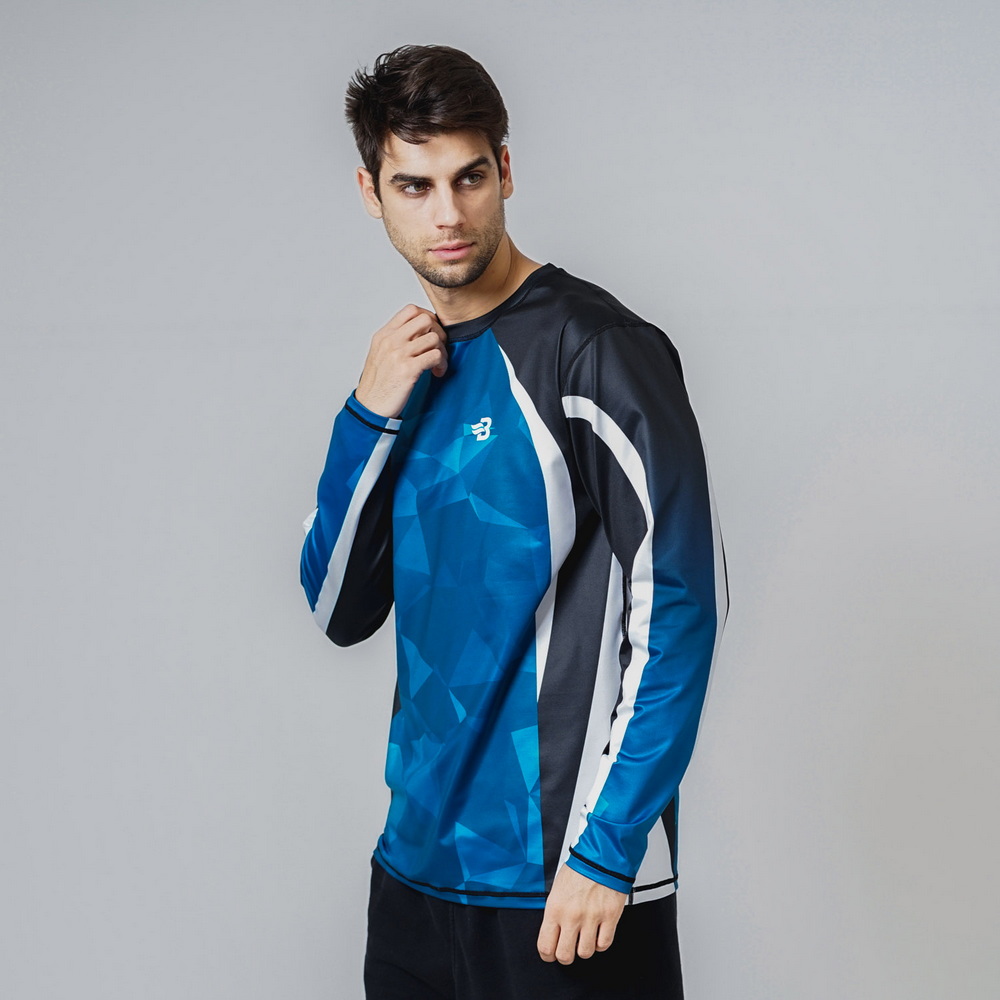Content Menu
● Introduction to Rash Guard Swimwear
>> What is a Rash Guard?
>> Why Do People Wear Rash Guard Swimwear?
● Importance of UV Protection
>> How Rash Guard Swimwear Protects You
● Different Uses of Rash Guard Swimwear
>> Rash Guards in Water Sports
>> Rash Guards as Active Wear
● The Evolution of Rash Guard Swimwear
● Key Benefits of Rash Guard Swimwear
● Types of Rash Guards
● Choosing the Right Rash Guard
● Care and Maintenance of Rash Guards
● Beyond Water Sports: Versatility of Rash Guards
● Environmental Considerations
● Conclusion
● Conclusion
● Frequently Asked Questions (FAQs)
>> Why is UV protection important?
>> What is the difference between a swim shirt and a rash vest?
>> Can I Wear a Rash Guard for Swimming?
>> Do Rash Guards Keep You Warm?
>> How Long Does a Rash Guard Last?
>> Can I wear normal clothes at the beach?
Dive into the world of swim fashion with this guide on the versatile and stylish trend of rash guard swimwear.
When it comes to water activities and beach outings, comfort and protection are paramount. Enter the rash guard swimwear, a versatile and essential piece of aquatic apparel that has revolutionized the way we approach water sports and sun protection. Whether you're a seasoned surfer, an occasional swimmer, or simply someone who enjoys lounging by the pool, understanding the ins and outs of rash guard swimwear can significantly enhance your water-based experiences. In this comprehensive guide, we'll dive deep into the world of rash guards, exploring their origins, benefits, types, and how to choose the perfect one for your needs.
Introduction to Rash Guard Swimwear
Have you ever heard of rash guard swimwear? It's a special type of clothing that people wear when they go to the beach or do water activities. Rash guards are often made from stretchy materials that fit snugly against your skin. They come in many colors and styles, making them fun to wear at the pool, beach, or while doing water sports.
What is a Rash Guard?
A rash guard, also known as a rashie, rash vest, or swim shirt, is a form-fitting athletic shirt designed for use in water activities. Typically made from a blend of spandex, lycra, nylon, or polyester, these garments offer a snug fit that moves with your body while providing protection from various elements. The name "rash guard" stems from its original purpose: to protect surfers from the abrasions caused by contact with their surfboards and the sand.
However, the functionality of rash guards has expanded far beyond their initial use in surfing. Today, they are widely used across a spectrum of water sports and activities, including swimming, snorkeling, diving, paddleboarding, and even beach volleyball. Their popularity has soared due to their ability to offer sun protection, thermal insulation, and enhanced comfort in and around water.
Why Do People Wear Rash Guard Swimwear?
People choose to wear rash guard swimwear for several good reasons. One of the biggest benefits is that it provides UV protection. This means it helps to shield your skin from the sun's harmful rays. Sunburns can hurt a lot, and wearing a rash guard can help prevent them. Also, these swim shirts keep you comfortable while you are splashing around in the water. They can protect you from getting scratched by the surfboard or from jellyfish stings, making them a smart choice for anyone who loves beachwear and active play!
Importance of UV Protection
UV protection is all about keeping your skin safe from ultraviolet rays. These rays come from the sun and can be harmful. There are two types of UV rays: UVA and UVB. Both can hurt your skin. UVA rays can cause skin aging and wrinkles, while UVB rays are known for causing sunburn. Too much exposure to these rays can lead to serious issues, like skin cancer. That's why it's super important to protect your skin when you're outside, especially when you're having fun at the beach or swimming in the pool!
How Rash Guard Swimwear Protects You
Rash guard swimwear is a great way to get UV protection. This special type of clothing is made from a strong fabric that blocks a lot of UV rays. Rash guards often come with a rating called UPF, which stands for Ultraviolet Protection Factor. A higher UPF number means more protection. For example, a rash guard with a UPF of 50 can block about 98% of UV rays! That helps keep your skin safe while you enjoy your time in the sun.
Wearing rash guard swimwear not only protects your skin but also makes you feel comfortable. Whether you're surfing waves or playing in the water, you'll feel good knowing your skin is shielded from the sun's harmful rays. So, when you pack for your next beach day or water sports adventure, don't forget your rash guard for both safety and fun!
Different Uses of Rash Guard Swimwear
Rash guard swimwear is not just for surfing or lounging by the pool. It has many different uses that make it a great choice for various activities. Let's explore how rash guards can be your go-to outfit for both water sports and other forms of active wear.
Rash Guards in Water Sports
Rash guards are super popular in water sports! If you love surfing, snorkeling, or paddleboarding, wearing a rash guard is a smart choice. When you're out in the sun and splashing around, rash guards keep you comfortable. They help protect your skin from the sun and from getting scratched by surfboards or coral. Plus, they give you extra support in the water!
Rash Guards as Active Wear
Did you know that rash guards can also be worn for activities outside of water sports? They make great active wear! Whether you're running, exercising at the gym, or playing beach volleyball, rash guards are a perfect fit. They are lightweight and stretchy, which means you can move easily. Plus, they keep you cool while you work up a sweat!
The Evolution of Rash Guard Swimwear
The concept of rash guards originated in Australia during the 1970s, where surfers sought a solution to the skin irritation caused by the combination of saltwater, sand, and constant friction with their surfboards. The early versions were simple lycra shirts that provided a barrier between the skin and the board's surface.
As the benefits of these garments became apparent, their design and functionality evolved. Manufacturers began incorporating UV-resistant materials, improving the fit, and expanding the range of styles available. The transition from purely functional gear to a fashion statement in water sports happened gradually, with rash guards now available in a wide array of colors, patterns, and designs.

Key Benefits of Rash Guard Swimwear
1. Sun Protection One of the primary advantages of wearing a rash guard is the superior sun protection it offers. Many rash guards come with a high Ultraviolet Protection Factor (UPF) rating, often UPF 50+, which blocks out harmful UV rays. This level of protection is crucial for preventing sunburn, reducing the risk of skin cancer, and maintaining healthy skin during prolonged exposure to the sun.
2. Rash Prevention True to their name, rash guards excel at preventing skin irritation and rashes. Whether you're surfing, bodyboarding, or engaging in other water activities that involve frequent contact with rough surfaces, a rash guard acts as a protective barrier for your skin. This is particularly beneficial for those with sensitive skin or individuals prone to chafing.
3. Thermal Regulation Rash guards provide an additional layer of insulation, helping to regulate body temperature in various water conditions. In cooler waters, they offer a bit of warmth, while in warmer climates, they can help prevent overheating by providing shade to the covered areas. This thermal regulation aspect makes rash guards versatile for use in different seasons and water temperatures.
4. Enhanced Performance For athletes and water sports enthusiasts, rash guards can improve performance by reducing drag in the water. The snug fit and smooth material allow for better hydrodynamics, which is particularly beneficial for swimmers and surfers. Additionally, the compression-like fit of many rash guards can help improve blood circulation and reduce muscle fatigue.
5. Modesty and Comfort Rash guards offer an excellent option for those who prefer more coverage at the beach or pool. They provide a comfortable alternative to traditional swimwear, allowing for greater freedom of movement and peace of mind. This aspect has made rash guards increasingly popular among individuals of all ages who desire more modest swimwear options.
Types of Rash Guards
Rash guards come in various styles and designs to cater to different needs and preferences. Understanding the types available can help you choose the most suitable option for your activities.
1. Short-Sleeve Rash Guards: Short-sleeve rash guards offer a balance between protection and freedom of movement. They are ideal for warmer climates and activities that require a full range of arm motion. These are popular among surfers and paddleboarders who need sun protection without the added warmth of long sleeves.

2. Long-Sleeve Rash Guards: Long-sleeve rash guards provide maximum coverage and protection. They are excellent for cooler water temperatures, extended sun exposure, and activities where additional skin protection is necessary. Divers, snorkelers, and individuals particularly concerned about sun protection often prefer this style.

3. Sleeveless Rash Guards: Sleeveless rash guards, also known as rash vests, offer core protection while leaving the arms free. These are popular for activities like beach volleyball or for those who want minimal coverage while still benefiting from the rash guard's protective properties.

4. Full-Body Rash Guards: Full-body rash guards, sometimes called skins, cover the torso, arms, and legs. These provide comprehensive protection and are often used by divers, surfers in colder waters, or individuals seeking maximum sun protection and skin coverage.

5. Loose-Fit Rash Guards: While most rash guards are form-fitting, loose-fit options are available for those who prefer a more relaxed style. These are often favored for casual beach wear or by individuals who find tight-fitting garments uncomfortable.

Choosing the Right Rash Guard
Selecting the perfect rash guard involves considering several factors to ensure it meets your specific needs and preferences.
1. Activity Type: Consider the primary activity you'll be engaging in while wearing the rash guard. Surfing might require a more durable, snug-fitting option, while casual beach wear could allow for a looser, more relaxed fit.
2. Water Temperature: If you'll be in colder waters, opt for a thicker material or long-sleeve design. For warmer climates, a lighter, more breathable fabric in a short-sleeve or sleeveless style might be more appropriate.
3. UV Protection: Look for rash guards with a high UPF rating, especially if sun protection is a primary concern. UPF 50+ offers the highest level of protection against harmful UV rays.
4. Fit Rash guards should fit snugly without restricting movement. Consider trying on different sizes to find the right balance between compression and comfort.
5. Material: Most rash guards are made from a blend of synthetic materials. Look for quick-drying fabrics that offer good stretch and recovery. Some eco-conscious brands now offer rash guards made from recycled materials.
6. Design and Style: With the wide variety of colors and patterns available, choose a design that reflects your personal style. Some rash guards feature stylish prints or patterns that make them suitable for wear beyond water activities.
Care and Maintenance of Rash Guards
Proper care of your rash guard can significantly extend its lifespan and maintain its protective properties.
1. Rinse After Use: Always rinse your rash guard with fresh water after use, especially if worn in saltwater or chlorinated pools. This helps remove salt, chlorine, and other potentially damaging substances.
2. Gentle Washing: Wash your rash guard in cold water using a mild detergent. Avoid using fabric softeners or bleach, as these can break down the fabric and reduce its effectiveness.
3. Air Dry:Allow your rash guard to air dry in the shade. Avoid using a dryer, as the heat can damage the elastic fibers and reduce the garment's stretch.
4. Avoid Rough Surfaces: When not in use, store your rash guard away from rough surfaces that could snag or damage the fabric.
5. Rotate Usage: If you frequently engage in water activities, consider having multiple rash guards to rotate. This allows each garment time to fully dry and recover between uses.
Beyond Water Sports: Versatility of Rash Guards
While rash guards are primarily associated with water activities, their versatility extends beyond the beach and pool.
1. Outdoor Activities: The sun protection offered by rash guards makes them excellent choices for various outdoor activities like hiking, running, or gardening, especially on hot, sunny days.
2. Layering: In cooler weather, rash guards can serve as an effective base layer under other clothing, providing warmth without bulk.
3. Yoga and Fitness: The stretchy, form-fitting nature of rash guards makes them suitable for yoga, Pilates, or other fitness activities where freedom of movement is essential.
4. Travel Wear: Lightweight and quick-drying, rash guards are excellent travel companions, serving multiple purposes from swimwear to casual wear.

Environmental Considerations
As awareness of environmental issues grows, many manufacturers are taking steps to produce more sustainable rash guards.
1. Eco-Friendly Materials: Look for rash guards made from recycled plastics or sustainable fabrics. These options help reduce the environmental impact of your water gear.
2. Durability: Choosing a high-quality, durable rash guard means you'll need to replace it less frequently, reducing overall consumption and waste.
3. UV Protection as an Alternative: By providing effective sun protection, rash guards can reduce the need for chemical sunscreens, some of which have been shown to harm marine ecosystems.
Conclusion
Rash guard swimwear has come a long way from its humble beginnings as a surfer's tool to prevent board rash. Today, it stands as a versatile, protective, and stylish option for anyone engaging in water activities or seeking enhanced sun protection. From the casual beachgoer to the professional athlete, rash guards offer a range of benefits that cater to diverse needs and preferences.
As you consider adding a rash guard to your water gear collection, remember to assess your specific needs in terms of activity, climate, and personal style. With the right rash guard, you can enjoy your time in and around water with greater comfort, protection, and confidence.
Whether you're riding the waves, exploring underwater worlds, or simply enjoying a day by the shore, a well-chosen rash guard can significantly enhance your experience. Embrace the protection, versatility, and style that rash guard swimwear offers, and make the most of your aquatic adventures while taking care of your skin and the environment.
Copy message
Conclusion
We've learned so much about swimwear, UV protection, and beachwear! Remember, wearing the right clothes can keep you safe and make your time in the water or on the beach even better.
Frequently Asked Questions (FAQs)
Why is UV protection important?
UV protection is important because it helps prevent sunburns and keeps your skin healthy.
What is the difference between a swim shirt and a rash vest?
A swim shirt is like a t-shirt for swimming, while a rash vest is tighter and provides more protection during activities like surfing.
Can I Wear a Rash Guard for Swimming?
Yes! Rash guard swimwear is perfect for swimming. They are designed to fit snugly, so they won't float up or get in your way when you're in the water. They are also made from stretchy materials that allow you to move freely. Plus, they help protect your skin from the sun's harmful rays while you're swimming, making them a smart choice for a day at the beach or pool.
Do Rash Guards Keep You Warm?
Rash guards can help keep you warm, especially in cooler water. When you wear a rash guard, it creates a thin layer of insulation against the water. This helps your body stay warm while you swim or surf. They are not as warm as wetsuits, but they do provide some comfort when the temperature dips. So, if you're swimming in chilly waters, a rash guard can be a good option!
How Long Does a Rash Guard Last?
The lifespan of rash guard swimwear can vary. On average, a good rash guard can last for several seasons if you take care of it. Factors that affect how long it lasts include how often you wear it, how you wash it, and the quality of the material. To make your rash guard last longer, follow the washing and storing tips provided in this article. With proper care, your rash guard can be a reliable part of your beachwear for years to come!
Can I wear normal clothes at the beach?
You can, but it's better to wear clothes made for the beach because they dry quickly and protect you from the sun.






































































